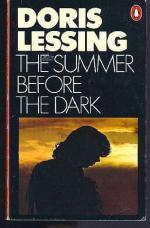|
This section contains 5,433 words (approx. 19 pages at 300 words per page) |

|
SOURCE: Tiger, Virginia. “‘Taking Hands and Dancing in (Dis)Unity’1: Story to Storied in Doris Lessing's ‘To Room Nineteen’ and ‘A Room’.” Modern Fiction Studies 36, no. 3 (autumn 1990): 421-33.
In the following essay, Tiger considers the relationship between Lessing's short fiction and her longer works through a reading of two of her short stories: “To Room Nineteen” and “A Room.”
“To see” is the dominant verb in the realist text “à la gastronomie de l'oeil” as Balzac expressed it—and realist fiction is preeminently concerned with seeing, with a seeing in detail.2
—Mark Seltzer (507)
To view Doris Lessing's short fiction in relation to “the coercive network of seeing, power and surveillance” (Seltzer 508) that characterizes the literature of the realist enterprise invites triply the hazardous. Of first concern is the author's well-known opposition to theoretics. On principle, Lessing dismisses critical terms like realism (and its contemporary companion, feminism) as prescriptive about...
|
This section contains 5,433 words (approx. 19 pages at 300 words per page) |

|


